The key to a successful journey lies not just in the destination, but also in the preparation and resourcefulness along the way. That’s where backpacking hacks come into play.
These smart tips and tricks can save you time, lighten your load, and make your trip more enjoyable. From repurposing everyday items like shower caps and sunglasses cases, to utilizing clever packing strategies like freezing water bottles or carrying a roll of duct tape, these hacks can simplify your backpacking experience and help you tackle any challenges the great outdoors may throw at you.
Ready to step up your backpacking game? Let’s dive in.
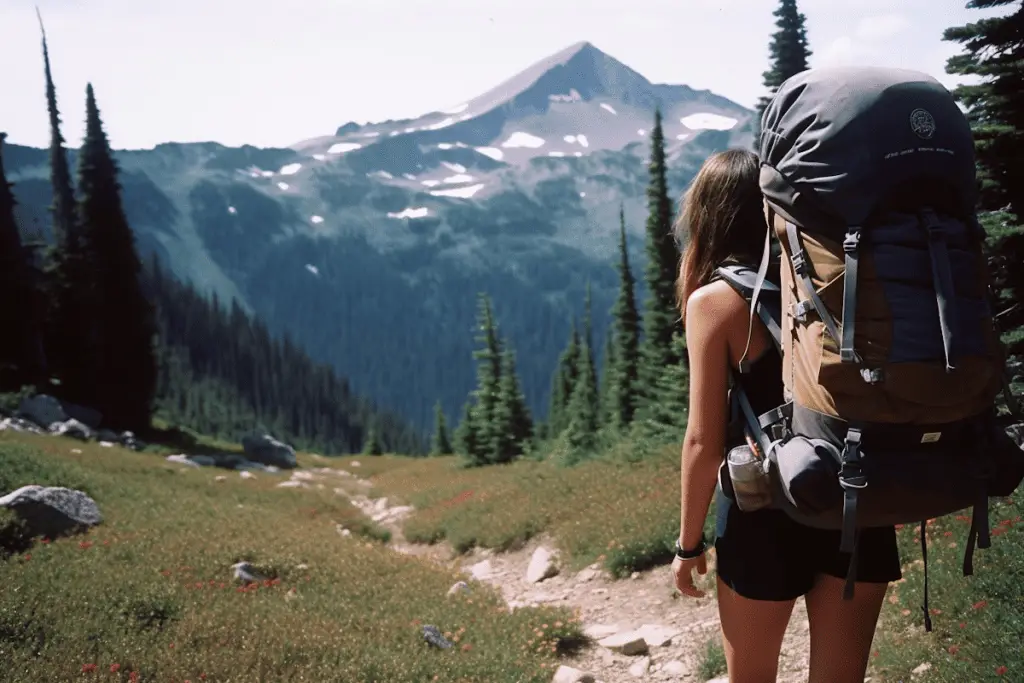
1. Lighting Backpacking Hacks: Make Your Own DIY Backpacking Lantern
Looking for a simple, resourceful solution to illuminate your campsite when the sun goes down? A DIY lantern might just be the perfect fit. All it requires is a headlamp and a translucent water jug, like your Nalgene, an item that’s likely already present in your backpacking gear. By attaching the headlamp to the jug, you’ll create a lantern that effectively diffuses light, providing a pleasantly ambient illumination for your camping area.
Start by filling your translucent water jug with water or leaving it empty, according to your preference. Then, strap your headlamp to the jug, positioning the light source to face inward, towards the body of the jug. The jug’s translucency will serve to diffuse the light from the headlamp across a wider area, mimicking the gentle glow of a lantern. This handy trick saves you from packing a separate bulky lantern, and its soft light is just right for those quiet evenings in the wilderness.
2. Use Silica Gel Packets
It might seem strange to think of those little packets you find in shoe boxes as a backpacking essential, but hear us out. Silica gel packets, often discarded as unnecessary, can be a secret weapon in your backpacking gear. Their purpose is simple, yet crucial: to absorb moisture. By placing a few of these packets strategically in your backpack, you can keep your gear drier and more protected from the elements. Incorporating these in your packing routine is one of those backpacking hacks that seem minor but can make a significant difference in preserving your gear.
Start by tucking a couple of these silica gel packets in among your clothes, especially near items that need to stay dry, like your spare socks or thermal layers. Place some in the pockets where you keep your electronics, and if you carry a camera or other sensitive equipment, ensure there’s a packet in their case or bag too. These small packets will soak up any residual moisture, guarding your gear against potential damage caused by dampness. It’s a little tip that requires hardly any space, but the payoff in protecting your gear from wet weather or accidental spills could be significant.
3. Turn Your Carbiner Into a Hanger
Think carabiners are just for climbers? Think again. They’re a versatile addition to any backpacker’s kit. When you’re out on the trails, maximizing utility while minimizing weight is crucial, and a carabiner fits that bill perfectly. These lightweight, durable clips can be easily attached to your backpack or tent, serving as an excellent gear hanger for wet clothes, water bottles, or other gear you need to keep within easy reach.
Using a carabiner is simple. Just clip it onto a strap of your backpack or to a loop in your tent. You can then hang items such as wet clothes to dry during your hike or overnight. You can also hang water bottles or other gear you use frequently, keeping them conveniently accessible. When the carabiner is not in use, it adds virtually no weight and takes up no space, sitting unobtrusively on your backpack or tent. This easy hack maximizes the utility of every square inch of your gear, enhancing your backpacking experience.
4. Bring A Dry-Erase Marker
Looking for a way to keep track of crucial information while backpacking? Turn your reusable water bottle into a mobile notepad with a dry erase marker. This simple yet effective hack allows you to jot down important notes, such as the location of your next water source or campsite, directly onto your water bottle. It provides an easily accessible reference point that you’re not likely to misplace or leave behind in the midst of your adventure. It’s one of those backpacking hacks that beautifully marries simplicity and practicality, providing a reliable solution to a common outdoor challenge.
Here’s how to do it. Grab a dry-erase marker and make sure your water bottle is dry. Write down the information you need to remember, like the next water source or a campsite location, right onto the body of the bottle. It stays put, even if the bottle sweats, but it’s easily erased or modified when you need to update your notes. No need to worry about your paper map getting wet or your phone running out of battery. This hack ensures your most important notes are always at your fingertips, literally!
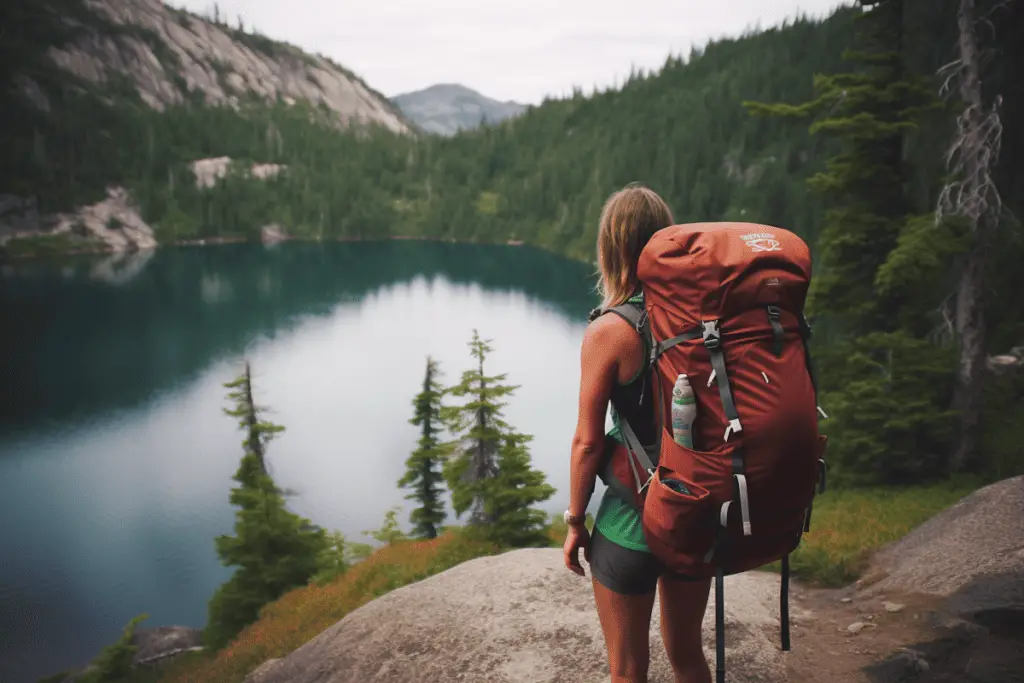
5. Turn Binder Clips Into Clothesline Aids
When it comes to outdoor hacks, sometimes the most effective ones involve repurposing everyday items. Take binder clips, for instance. While they might seem like an odd addition to your packing list, these sturdy clips can come in very handy during your backpacking trip. Specifically, a large binder clip can serve as a makeshift clothesline clip, perfect for hanging wet clothes out to dry.
To use this hack, you simply attach the binder clip to your backpack or even a convenient tree branch. Then, use the clip to secure your wet clothes, allowing them to air out and dry as you go about your day or set up camp for the night. No need to worry about your clothes blowing away with the wind or staying damp inside your pack. It’s a simple, space-saving solution that requires minimal effort but offers maximum benefits, ensuring you always have dry clothes ready for your adventure.
6. Sleeping Backpacking Hacks: Turn Your Neck Wallet Into a Backpacking Pillow
Travel accessories often hold the potential for multipurpose use, and a neck wallet is no exception. While it’s primarily used for keeping your valuable items close and secure, it can double up as a makeshift pillow when you’re backpacking. This trick involves filling your neck wallet with clothes, a jacket, or other soft items to create a comfortable headrest that can significantly improve your sleep quality in the great outdoors.
To transform your neck wallet into a camping pillow, begin by emptying it of any valuables. Then, stuff it with a folded-up jacket, t-shirt, or any other soft clothing item you have on hand. Once filled, you can adjust the contents to your comfort level, and voila, you’ve got yourself a portable pillow! This hack not only enhances your comfort during sleep but also helps in saving space, reducing the need to carry a separate, bulky pillow. It’s a win-win for the practical backpacker.
7. Turn Your Laundry Bag Into a Clothes Dryer
While backpacking, dealing with wet clothes can be a bit of a challenge. Carrying them inside your backpack can result in damp gear, and nobody wants that. But here’s a simple solution: a small mesh laundry bag. Not only does it keep your wet and dry gear separate, but it also allows your wet clothes to dry even as you continue hiking, thanks to the airflow it provides. This is one of those backpacking hacks that enhances your comfort on the trail, proving that even small adjustments can significantly improve your outdoor experience.
To employ this hack, pack a lightweight mesh laundry bag in your gear. When you have wet clothes, instead of stuffing them back into your backpack, put them in the mesh bag and secure it to the outside of your pack. As you continue your hike, the wind and sun will help speed up the drying process. The best part is, you won’t have to stop and wait for the clothes to dry or, worse, put on cold, wet clothes. It’s a simple, efficient way to ensure you always have dry clothes ready for your adventure.
8. Cooking Backpacking Hacks: Turn Foam Pads Into Cooking Tools
When you’re out in the wild cooking meals over a campfire, handling hot pots and pans can become a challenge. That’s where a little ingenuity and repurposing comes in. A small piece of a foam pad, or even an old mousepad, can be the perfect solution to create a handy pot grip, helping you manage hot cookware without burning your fingers.
Start by cutting a small section from a foam pad or an old mousepad. You want to make sure it’s large enough to protect your hand but small enough to be packed away easily. When you’re ready to cook, use this makeshift pot gripper to handle your cookware, protecting your fingers from the heat. Besides being a convenient and lightweight addition to your camping gear, it also puts to use something you might have otherwise thrown away. It’s a smart, sustainable hack that proves invaluable in the wilderness kitchen.
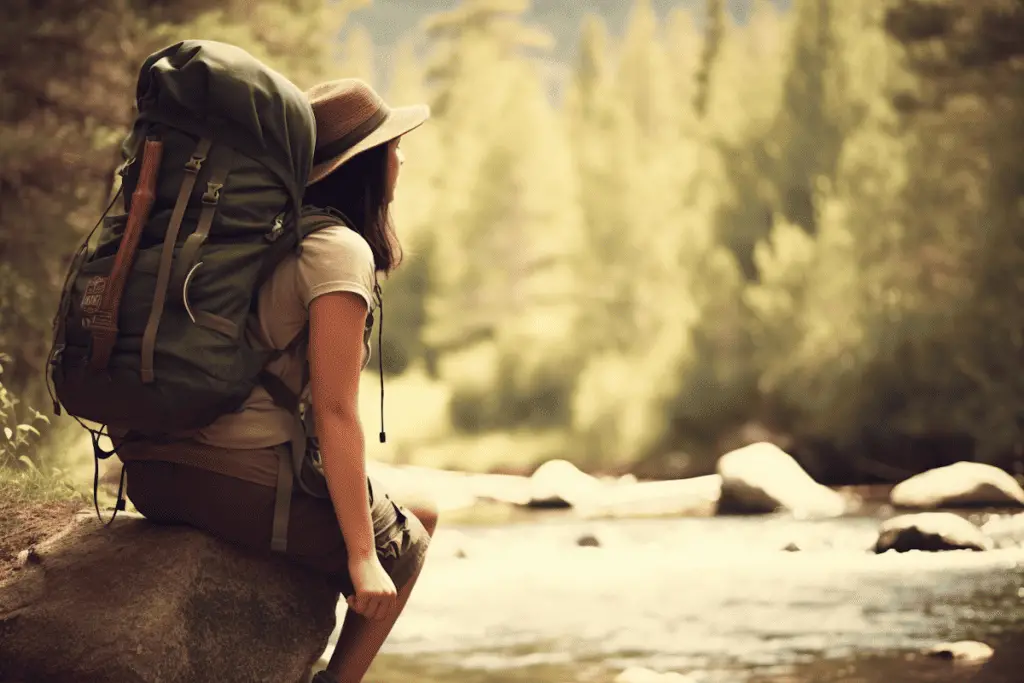
9. Cleaning Backpacking Hacks: Use A Shower Cap To Keep Your Gear Clean
Mud and dirt are part and parcel of backpacking, but they don’t have to make a mess of your gear. A simple solution to prevent muddy shoes from soiling the rest of your belongings is to use a shower cap as a shoe cover. It’s lightweight, compact, and can effectively keep the dirt on your shoes from spreading to your clean clothes or inside your tent. It’s one of those easy-to-implement backpacking hacks that keep your gear clean and your trip hassle-free.
The process couldn’t be simpler. After a muddy hike, slip the open end of a shower cap over your dirty shoes before placing them inside your backpack or tent. The elastic band will secure it in place, ensuring the dirt stays confined. Shower caps are cheap and disposable, so once you’ve reached a place where you can clean your shoes, you can easily discard the used cap. It’s a straightforward hack that contributes greatly to maintaining cleanliness while out on the trail.
10. Eating Backpacking Hacks: Learn How To Forage
Backpacking adventures offer a unique opportunity to reconnect with nature and part of that connection can involve learning about the local flora and fauna. Gaining basic foraging skills not only adds an interesting layer to your outdoor experience but also allows you to supplement your food supply. However, it’s crucial to ensure that you accurately identify which plants are edible to avoid any potential risks.
Before your trip, take the time to research the local plant life of your destination. Learn to identify edible plants, berries, or nuts, and familiarize yourself with basic foraging techniques. Many regions also have foraging guides or classes that can provide valuable local knowledge. While out on the trail, foraging can offer a welcome variety to your diet and an exciting way to engage with your surroundings. But always remember, safety first: if you’re unsure about a plant’s edibility, it’s better to leave it be.
11. Hygiene Backpacking Hacks: Convert Your Dry Bag Into a Campsite Washing Machine
Staying fresh while backpacking can sometimes be a challenge, especially when it comes to clothes. However, there’s a creative way around this issue using an item you likely already carry: a dry bag. This versatile gear can be turned into a makeshift washing machine, allowing you to clean your clothes even while you’re far from the conveniences of home.
To set up your campsite washing machine, fill the dry bag with water, a bit of biodegradable detergent, and your dirty clothes. Ensure you seal it tightly, then shake and agitate the bag to mimic the action of a washing machine. After a good shake, let the clothes soak for a while, then rinse with fresh water. This easy and effective backpacking hack not only keeps you feeling clean on your adventure but also helps prolong the lifespan of your outdoor clothing by washing off dirt and sweat promptly.
12. Transform Your Stuff Sack Into a Camping Pillow
Don’t want to pack a neck wallet? No problem, there are multiple backpacking hacks for creating trail pillows. Instead of carrying a separate pillow, consider using a stuff sack. This versatile bag can easily be turned into a pillow, filled with clothes or a sleeping bag liner to provide a comfortable place to rest your head after a long day on the trail.
To create your makeshift pillow, take an empty stuff sack and fill it with soft items, like spare clothes or a sleeping bag liner. You can adjust the amount of stuffing to find the perfect level of firmness and height that suits you. Once done, simply zip or tie the sack closed, and it’s ready to use. This multifunctional approach not only saves space in your backpack but also adds an element of comfort to your outdoor sleeping arrangements. It’s a simple, yet effective hack for any backpacking adventure.
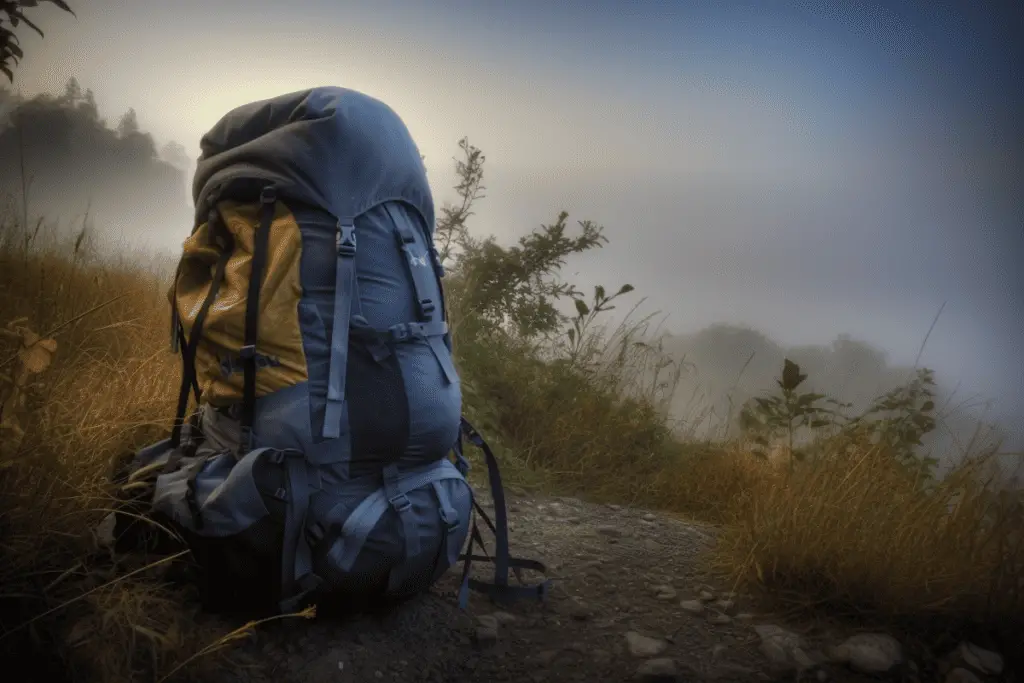
13. Make a DIY Fire Starter Kit
Starting a fire can be one of the most challenging tasks when you’re backpacking, especially in damp conditions. To make this task a bit easier, consider creating a DIY fire starter kit. With just a few simple items like cotton balls dipped in petroleum jelly or dryer lint sealed in a waterproof bag, you can have a reliable fire starter on hand, ready to get your campfire blazing.
There are multiple backpacking hacks for creating fire-starting kits, but this is the one I like the best. To prepare your kit, begin by dipping cotton balls in petroleum jelly until they are well coated, or collect dryer lint, which is also an excellent fire starter. Once prepared, store these in a small waterproof bag or container. The petroleum jelly or dryer lint will help the cotton balls burn longer, making it easier to start your fire. Remember to seal the bag properly to keep your fire starters dry. This small, lightweight kit won’t take up much room in your backpack, but it can save you a lot of hassle when it’s time to start a campfire. With this hack, you’ll be enjoying your cozy fire in no time.
14. Pack a Travel Size Umbrella
Adding the extra weight of an umbrella might not seem like one of the best backpacking hacks, but packing a small travel-sized umbrella can be a game-changer on the trail. Not only can it provide you with immediate shelter from unexpected rain showers, but it can also serve as a handy sunshade on particularly hot, sunny days.
The beauty of a travel-sized umbrella is its compact size, making it easy to carry in your backpack without adding significant weight or bulk. During unpredictable weather, it can quickly be deployed to keep you dry. On hot days, it provides instant shade, offering a respite from the harsh sun and helping prevent overheating or sunburn. So, while an umbrella might not be the first thing you think of when packing for a backpacking trip, its versatility could make it a valuable addition to your outdoor gear.
15. Packing Backpacking Hacks: Leverage Your Sunglasses Case
Backpacking usually requires strict packing protocols, focusing on the essentials and leaving behind anything unnecessary. But when it comes to small, delicate items like charging cables, earphones, or even jewelry, having a protective case is key. That’s where a sturdy sunglasses case comes in handy. It offers the perfect compact, hard-shelled storage solution to prevent these items from getting damaged. This nifty trick is one of those backpacking hacks that truly shows how ingenious and resourceful backpackers can be.
In addition to protecting your sunglasses, the case can act as a mini storage box for other items. Simply place your small, delicate items inside, close the case and you’ve got a protective shell to shield them from the rigors of travel. This not only keeps your items safe and organized but also makes them easier to find in your pack. It’s a simple, practical way to repurpose an item that’s already part of your gear, proving that sometimes, the best storage solutions are the ones you already have at hand.
16. Wrap Your Gear In Duct Tape
Duct tape might seem like an odd addition to a backpacker’s kit, but its utility in the outdoors is surprisingly wide-ranging. Known for its strength and versatility, duct tape can be used for quick gear repairs, securing items temporarily, and even for emergency first aid. However, a full roll can be bulky and heavy, so here’s a hack: wrap a few feet of duct tape around a pencil or a water bottle.
This method of carrying duct tape ensures that you always have a handy supply without taking up much space or adding unnecessary weight. When you need some tape, simply peel it off your pencil or water bottle. From mending a torn tent to fixing a broken trekking pole, or even as an improvised bandage in a pinch, the potential uses of duct tape on a backpacking trip are almost limitless. It’s one of those simple, yet incredibly useful hacks that can save the day when you’re out in the wilderness.
Don’t think you have to just use duct tape for this trick to work either. Switch the duct tape out for 100-mile-an-hour tape and this simple hack becomes one of the best backpacking hacks you’ll ever come across.
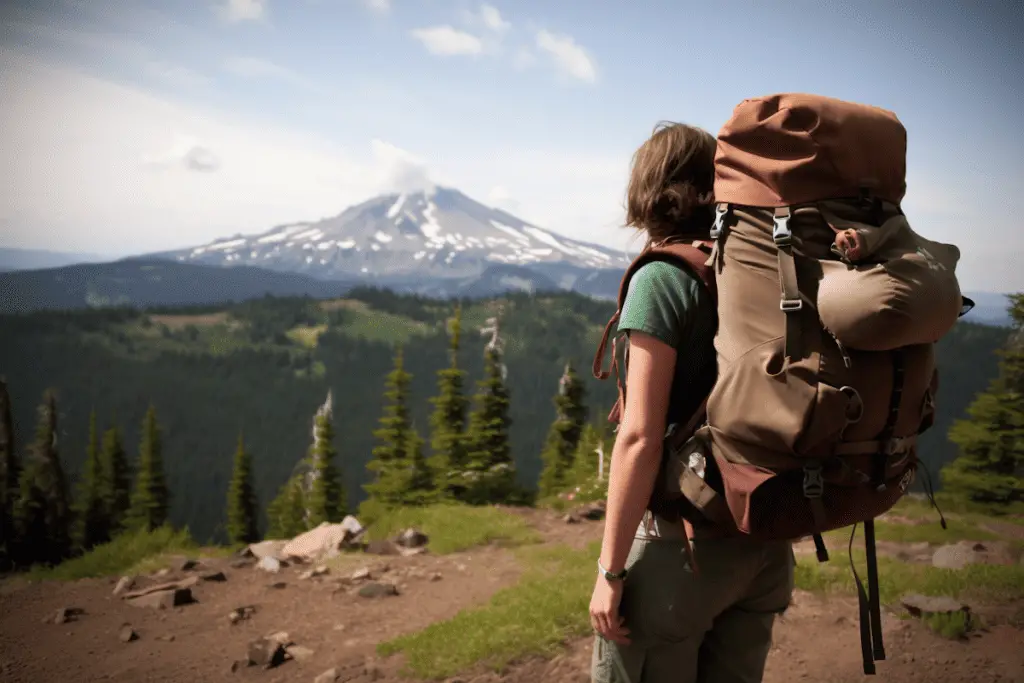
17. Freeze Your Water Bottles
When you’re backpacking, keeping your food and drinks cold can often be a challenge, especially during warmer months. However, a simple and effective solution is at hand: freezing water bottles before your trip. Not only can these serve as your water supply, but they can also double as ice packs in your cooler or backpack to keep your food and drinks cold for longer.
Before setting off, fill a few water bottles about three-quarters of the way full (to allow for expansion as the water freezes) and place them in the freezer. Once they’re frozen, you can pack them alongside your food or drinks. As the ice melts, you’ll have a source of cold, refreshing water to drink. It’s a practical and space-saving strategy that enhances your backpacking experience, especially during those hot summer hikes. Just remember to leave room for expansion to prevent the bottles from cracking as the water freezes!
Hacking Your Way To A Better Backpacking Trip
I hope you found some of these backpacking hacks useful. Go on enough backpacking trips and you’ll find yourself coming up with all sorts of backpacking tricks to make your life easier on the trail. When you do, please come back and share them in the comments below!
